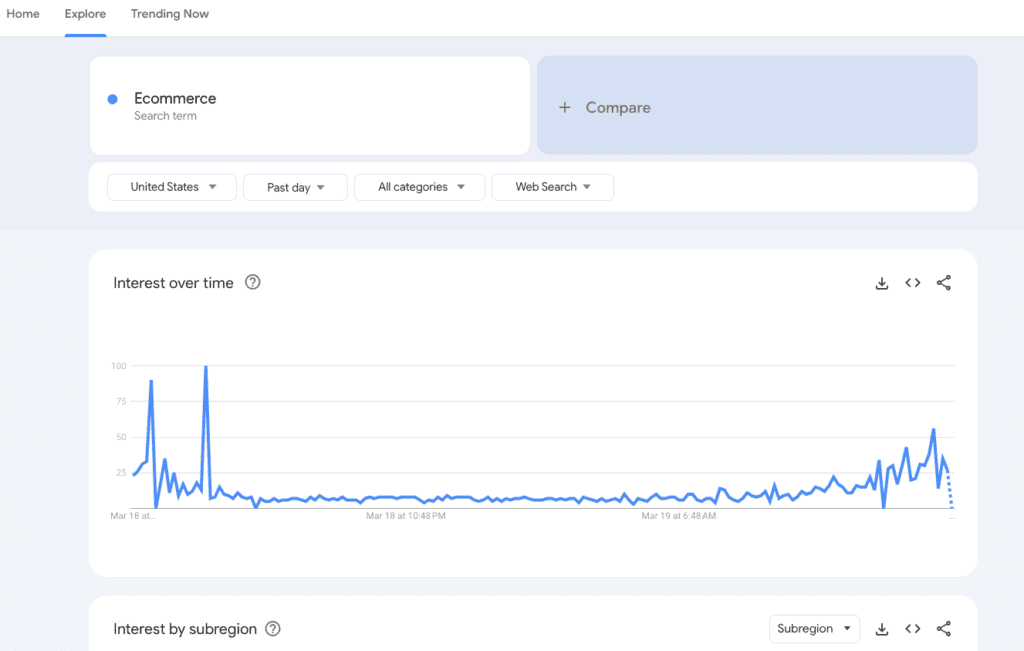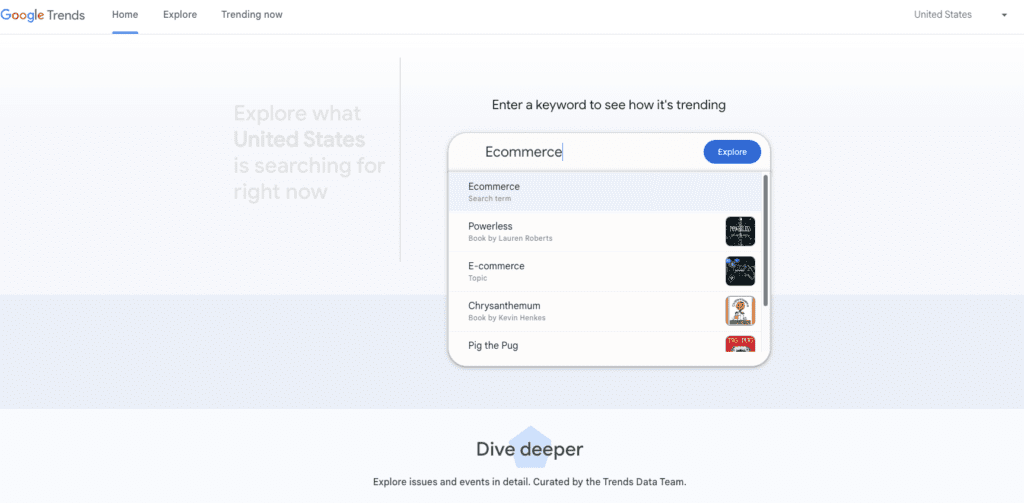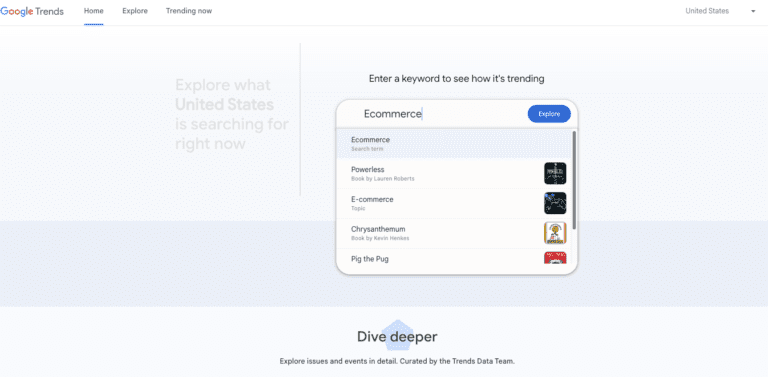Want to know what are the current trends in eCommerce? Wondering how online businesses are staying ahead in 2025? If you’re running an online store or planning to start one, keeping up with eCommerce trends is crucial. The industry is evolving fast, and what worked last year might not be enough to stay competitive today.
Right now, shoppers expect faster, smarter, and more personalized experiences. They want AI-driven recommendations, hands-free voice shopping, and eco-friendly products. Brands that embrace these trends are seeing higher engagement, increased sales, and stronger customer loyalty.
So, what is trending in eCommerce in 2025? In this post, I’ll walk you through the biggest shifts happening right now—from AI-powered personalization to voice commerce and sustainability.
You’ll learn what are the recent trends in ecommerce, how top brands are adapting, and how you can apply these strategies to grow your online store.
Let’s dive in!
📞 Contact Smart Clipping for Editing Trending Ecommerce Products!
What Are the Current Trends in eCommerce? – 2025
1. AI-Powered Personalization: The Future of Customer Experience
AI is changing how we shop online. Today, customers expect a personalized shopping experience, and AI helps businesses deliver just that. From product recommendations to chatbots, AI is making eCommerce smarter and more customer-friendly.
How AI in eCommerce Is Changing the Shopping Experience
AI-driven personalization means that every shopper gets a unique experience based on their preferences and past behavior. If you’ve ever seen a “Recommended for You” section on Amazon, that’s AI at work. It studies what you browse, click, and buy, then suggests similar products.
How to Use Google Trends for eCommerce – Complete Guide
Examples of AI in eCommerce
- Chatbots: AI-powered bots answer customer questions 24/7. Brands like H&M and Sephora use chatbots to help shoppers find products instantly.
- Personalized Product Recommendations: Netflix recommends shows based on what you watch, and online stores do the same with products. This increases sales and keeps customers engaged.
- AI-Generated Email Marketing: AI helps send emails based on what customers like. If someone leaves a product in their cart, AI can send a reminder email with a discount to encourage them to complete the purchase.

Benefits of AI in eCommerce
- Higher Conversion Rates: Customers are more likely to buy when they see products they actually want.
- Better Customer Retention: A personalized experience keeps shoppers coming back.
- Increased Average Order Value (AOV): AI upsells and cross-sells products that match customer preferences.
AI Tools & Platforms
- Shopify AI – Helps automate marketing and personalize shopping experiences.
- ChatGPT – Can be used for customer service chatbots and content generation.
- Amazon’s AI – One of the most advanced AI systems for product recommendations.
If you want to learn more about how AI is transforming online businesses, check out this Forbes article on AI in eCommerce.
👉 How to Find Trending Ecommerce Products – Proven Ways to Spot Winners
2. The Rise of Voice Commerce & Conversational Shopping
Voice shopping is growing fast. More people are using voice assistants like Alexa, Siri, and Google Assistant to order products. Instead of typing a search, they simply say, “Order a pair of running shoes,” and their assistant does the rest.
The Growth of Voice Search Shopping
According to reports, over 50% of internet users use voice search daily, and many are shopping this way. Major retailers like Walmart and Amazon are already optimizing their platforms for voice-based orders.
How Brands Optimize for Voice Commerce
- Use Long-Tail Keywords: Instead of “best coffee maker,” optimize for “What is the best coffee maker under $100?”
- Structured Data: This helps Google understand your product listings better for voice search.
- Conversational Content: Write product descriptions and FAQs in a way that mimics natural speech.
How to Find Ecommerce Trending Keywords That Bring Success
Conversational Commerce: A New Way to Shop
Apart from voice assistants, people are shopping through WhatsApp, Instagram DMs, and live chat. This is called conversational commerce—shopping through messages instead of traditional websites.
Why Customers Love Hands-Free Shopping
- Speed: Voice shopping is quicker than typing and browsing.
- Convenience: Customers can shop while cooking, driving, or multitasking.
- Personalized: Smart assistants remember previous purchases and suggest relevant products.
If you want to optimize your online store for voice commerce, check out this HubSpot guide on voice search optimization.
3. Sustainable eCommerce: Going Green Matters More Than Ever
More shoppers want eco-friendly products, sustainable packaging, and ethical business practices. Brands that ignore this shift risk losing customers to competitors that prioritize sustainability.
Why Eco-Conscious Shopping Is Now Mainstream
- Over 60% of consumers prefer sustainable brands.
- Younger generations (Millennials & Gen Z) actively seek eco-friendly products.
- Governments are enforcing stricter environmental regulations for eCommerce businesses.
How Brands Use Sustainability to Attract Customers
- Sustainable Packaging: Companies like Amazon and Apple are reducing plastic waste by using recyclable materials.
- Carbon-Neutral Shipping: Brands like Patagonia and Nike offset their carbon footprint.
- Ethical Sourcing: More companies are ensuring fair wages and humane working conditions in their supply chains.
13 Best Cameras for Ecommerce Product Photos
Consumers Demand Transparency
Customers want proof that brands are truly eco-friendly. Companies must be open about their efforts and display certifications like:
- Fair Trade Certified
- Forest Stewardship Council (FSC) Approval
- Leaping Bunny (Cruelty-Free)
Brands Leading the Way in Sustainable eCommerce
- Patagonia: Uses 100% recycled materials in many of its products.
- Allbirds: Sells eco-friendly shoes made from natural materials like wool and eucalyptus fiber.
- Etsy: Offsets 100% of carbon emissions from shipping.
Want to make your business greener? Check out this Shopify sustainability guide for tips.
15 Best Ecommerce Photo Editing Software for Perfect Product Images
4. Social Commerce: Shopping on Social Media
Wondering what are the current trends in eCommerce? Social commerce is taking over, and it’s changing how people shop. Platforms like TikTok Shop, Instagram Shopping, and Pinterest Buy buttons have transformed social media into full-scale eCommerce stores.
Instead of just discovering products, customers can now purchase them directly on their favorite apps—without ever leaving their feeds.

Why Social Media Is Becoming a Shopping Hub
People spend hours scrolling on social media, so it makes sense for businesses to sell there. Platforms are now offering built-in storefronts, seamless checkout options, and AI-driven recommendations based on browsing behavior.
This removes friction from the buying process, leading to higher conversion rates and impulse purchases.
What Type of Photos are Best for Wix Ecommerce? A Data-Backed Guide
How Brands Are Winning with Social Commerce
Successful brands are using:
- Influencer marketing – Partnering with creators to build trust and showcase products.
- User-generated content (UGC) – Featuring real customers using the products to boost authenticity.
- Live shopping events – Hosting real-time product demos on TikTok, Instagram, and Facebook Live.
For example, TikTok Shop has helped small brands go viral overnight. A trending product can sell out in hours, all thanks to short-form video marketing and algorithm-driven visibility.
If you want to grow your eCommerce business, social commerce isn’t optional—it’s essential. Shoppers trust recommendations from influencers and peers more than traditional ads. So, focus on engaging content, interactive shopping experiences, and direct selling on social platforms to stay competitive.
How to Edit Product Photos for Ecommerce – Complete Guide
5. Subscription-Based eCommerce: The Shift to Recurring Revenue
Ever wondered why brands like Dollar Shave Club, BarkBox, and HelloFresh are so successful? The answer lies in subscription-based eCommerce. Consumers love convenience, and businesses love predictable revenue.
Why Customers Love Subscription Models
People prefer subscriptions because they:
- Eliminate decision fatigue – Customers don’t have to reorder essentials repeatedly.
- Offer better value – Brands bundle products at discounted prices.
- Create a sense of exclusivity – Members get special perks, early access, or VIP treatment.
This explains why what is trending in eCommerce today includes subscription services for everything—from meal kits to skincare and pet supplies.
How to Add White Background on Ecommerce Photos Quick (2025)
How Brands Benefit from Subscription Models
For eCommerce businesses, subscriptions mean:
- Steady cash flow – Monthly billing ensures predictable revenue.
- Higher customer retention – Subscribers are more loyal than one-time buyers.
- Lower churn rates – Businesses can offer loyalty rewards and custom experiences.
How to Start a Subscription Model for Your Store
If you’re selling consumables, digital products, or exclusive memberships, consider adding a subscription option. Platforms like Shopify, WooCommerce, and ReCharge Payments make it easy to integrate subscriptions into your eCommerce store.
The key is to offer flexibility—allow customers to pause, cancel, or adjust their plans easily. Happy customers stay subscribed longer, which means more revenue for your business.
How to create advertising photos for my ecommerce clothing store
6. Augmented Reality (AR) & Virtual Shopping: A Game Changer
Buying online can be risky—what if the product doesn’t look the same in real life? That’s why AR-powered shopping is one of the biggest eCommerce trends in 2025. It solves the uncertainty by allowing customers to “try before they buy.”
How AR is Changing Online Shopping
Brands are using AR to help shoppers:
- Try on makeup and accessories before purchasing (Sephora Virtual Try-On).
- See how furniture fits in their space (IKEA Place app).
- Test different eyeglass styles (Warby Parker’s AR glasses feature).
How to Take Ecommerce Photos According to Experts (2025)
Why AR Boosts Sales and Reduces Returns
AR increases customer confidence because people can see exactly how a product looks before checking out. This means fewer refunds, higher conversions, and better customer satisfaction.
What’s Next for AR in eCommerce?
The future looks even bigger, with AR shopping expanding into the metaverse. Imagine trying on clothes, attending virtual fashion shows, or shopping in digital malls—all from your phone.
How to Tag Photos on Ecommerce Website for Maximum Visibility (2025)
7. Fast & Flexible Fulfillment: The Amazon Effect
People want their orders now—not in a week. Thanks to Amazon, same-day and even 1-hour delivery are becoming the new standard. If you’re not offering fast shipping, customers will find someone who does.
Why Speed Matters More Than Ever
- 62% of shoppers expect free one-day delivery on their orders.
- Slow shipping is the #1 reason for abandoned carts.
- Customers are willing to pay extra for faster shipping.
Micro-Fulfillment Centers & Dark Stores
Retailers are opening micro-fulfillment centers—small warehouses in key locations—to get products to customers faster. Dark stores (retail spaces that only fulfill online orders) are also rising, especially in grocery and fashion eCommerce.
📞 Contact Smart Clipping for Editing Trending Ecommerce Products!
How to Offer Fast Shipping Without Breaking the Bank
- Use Third-Party Logistics (3PL): Companies like ShipBob and Deliverr handle fulfillment for you.
- Partner with Local Couriers: Uber, DoorDash, and Instacart now deliver eCommerce products.
- Optimize Inventory: Store your best-selling products closer to your customers.
The Role of Dropshipping & 3PL
Dropshipping can speed up fulfillment if you work with suppliers who ship from local warehouses. Meanwhile, 3PL services let you store inventory strategically and use their distribution network to cut delivery times.
Bottom Line: Fast shipping is no longer optional. If you want to compete, you need a solid fulfillment strategy.
How Product Photos Improve Ecommerce and Increase Sales
8. Data Privacy & Customer Trust: A Cookieless Future
Online privacy laws are changing. Google is phasing out third-party cookies, making it harder to track users across websites. This shift forces brands to rethink how they collect and use data.
What Does This Mean for eCommerce?
- Retargeting ads won’t work the same way.
- Brands will rely on zero-party and first-party data instead.
- Transparency will be key to earning customer trust.
How to Collect Customer Data Without Cookies
- Encourage Email Sign-Ups: Offer discounts or exclusive deals in exchange for emails.
- Use Surveys & Quizzes: Gather customer preferences through interactive content.
- Leverage Loyalty Programs: Reward repeat customers and track their shopping behavior.
Building Trust Through Transparency
Customers care about how their data is used. To build trust:
✅ Be clear about your privacy policies.
✅ Offer secure payment options like PayPal & Apple Pay.
✅ Use AI-driven analytics to personalize offers without being invasive.
Brands that prioritize privacy and security will win customer loyalty in 2025 and beyond.
How to edit photos of clothing for an ecommerce site – 12 Best Ways
9. Mobile-First eCommerce: The Need for Speed
If your website isn’t mobile-friendly, you’re losing customers. More than 73% of online sales happen on mobile, making mobile commerce (mCommerce) one of the biggest trends in eCommerce right now.
How to Optimize for Mobile Shopping
1️⃣ Speed Up Your Site: A 1-second delay can lower conversions by 7%. Use tools like Google PageSpeed Insights to test load times.
2️⃣ Simplify Checkout: Fewer steps = fewer drop-offs. Offer guest checkout and one-click payments.
3️⃣ Use Mobile-Friendly Design: Buttons should be easy to tap, and text should be readable without zooming.
Best Mobile Payment Options
Customers expect fast, secure payments. The most popular mobile payment options include:
✅ Apple Pay & Google Pay – Enable one-tap checkout.
✅ Buy Now, Pay Later (BNPL) – Let customers split payments into installments.
✅ Digital Wallets – PayPal, Venmo, and Cash App are becoming the norm.
Mobile shopping isn’t the future—it’s already here. Make sure your site works flawlessly on smartphones to keep your customers happy.
11 Best Photo Editing App for Ecommerce Sellers of All Levels
10. The Power of Buy Now, Pay Later (BNPL)
Have you noticed more stores offering “Pay in 4” options? That’s because Buy Now, Pay Later (BNPL) is exploding. Services like Klarna, Afterpay, and Affirm let customers split payments into installments—without credit checks or interest.
Why BNPL Is Growing
- Increases Average Order Value (AOV): Shoppers buy 20-30% more when they can pay over time.
- Reduces Cart Abandonment: Customers hesitate less when they don’t have to pay everything upfront.
- Attracts Younger Shoppers: Millennials and Gen Z prefer BNPL over credit cards.
Is BNPL Right for Your Business?
✅ Great for fashion, electronics, and big-ticket items.
✅ Boosts sales without adding risk (BNPL providers handle collections).
❌ Can lead to impulse spending—some customers struggle with repayments.
How to Add BNPL to Your Store
Most eCommerce platforms support BNPL integrations. Shopify, WooCommerce, and BigCommerce offer built-in support for Klarna, Afterpay, and Affirm.
Offering flexible payment options makes your store more accessible and competitive.
How Important is Product Photography and Image Editing in Ecommerce (2025)
Conclusion & Actionable Takeaways
The eCommerce landscape is changing fast, and staying ahead means adapting to what is trending in eCommerce.
🔹 Fast fulfillment is essential—customers expect same-day or next-day delivery.
🔹 Data privacy matters—use zero-party data and be transparent with customers.
🔹 Mobile-first design is key—if your site isn’t optimized for mobile, you’ll lose sales.
🔹 BNPL is growing—offering flexible payment options can boost conversions and AOV.Now, the question is: Which trend will you implement first? Let me know in the comments!


